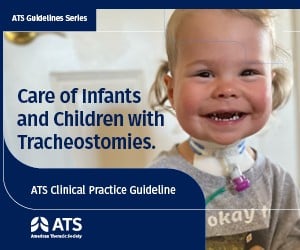A new clinical practice guideline released by the American Thoracic Society on October 22, 2025, aims to assist parents and caregivers in making informed decisions about tracheostomy for children. This guideline addresses the emotional and medical complexities involved in determining whether a tracheostomy, a surgical procedure that inserts a tube into the windpipe, is the most appropriate treatment option for young patients.
Christopher Baker, MD, co-chair of the guideline and director of the Ventilator Care Program at Children’s Hospital Colorado, emphasized the difficult nature of this decision. He stated, “A tracheostomy can save a life, lengthen a life, and improve the quality of life. However, this is not always true. In some cases, a tracheostomy may not help a patient or may even cause them to suffer more.” The guideline is intended to support clinicians and family caregivers in providing optimal care for children facing such critical health decisions.
Guideline Development and Recommendations
This guideline represents a collaborative effort among a panel of experts, including health professionals and parents of children with tracheostomies. Reshma Amin, MD, director of Sleep Medicine and Long-Term Ventilation Programs at The Hospital for Sick Children, co-led the panel. They focused on answering six key questions using the GRADE (Grading of Recommendations, Assessment, Development and Evaluation) framework to ensure evidence-based recommendations.
Among the significant recommendations are:
- Recommendation 1: Ethical principles should guide shared decision-making about tracheostomy placement, with a strong recommendation and very low certainty of evidence.
- Recommendation 3: A trained, alert caregiver must always be present for children at risk of immediate complications related to tracheostomies, also with a strong recommendation and very low certainty of evidence.
- Recommendation 5b: A complete airway evaluation is recommended before attempting decannulation. This evaluation should assess various parts of the airway, ensuring a thorough understanding of the child’s condition.
The guidelines represent the first formal clinical practice document on tracheostomy care since the ATS issued an official statement in 1999. This updated guidance incorporates more scientific rigor, benefiting pediatric pulmonologists, critical care clinicians, and rehabilitation specialists.
Impact on Caregivers and Clinicians
Parents like Crystal Costante, who participated in the guideline development, express a sense of hope and relief. Costante, whose child depends on a ventilator and has a tracheostomy, highlighted the importance of family involvement in medical decisions. “Clear and consistent guidance means that clinicians across different settings will have a shared understanding of what high-quality, family-centered tracheostomy care looks like,” she stated. This approach fosters trust and enhances communication, enabling caregivers to actively participate in shared decision-making.
Dr. Baker acknowledged the potential challenges in implementing these guidelines, particularly in resource-limited settings, including rural areas and low- to middle-income countries. The team is planning follow-up research to explore the applicability of these recommendations in such contexts.
Since 2016, the ATS has published over 30 clinical practice guidelines addressing various health conditions, ranging from asthma to tuberculosis. The Society also focuses on developing tools to help implement these guidelines effectively.
The new guidelines, now available in the American Journal of Respiratory and Critical Care Medicine, offer an essential resource for healthcare providers tasked with navigating the intricacies of tracheostomy care for children.







